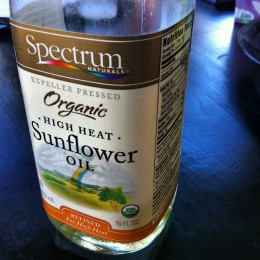How to Make the Perfect Roasted Chicken

The Perfect Roasted Chicken: Crisp Skin & Juicy Meat
Of the dozens of recipes I’ve tried for making a roasted whole chicken, none ever delivered. I want crisp, browned skin and juicy, flavorful meat. Most recipes roast the chicken on too low of a temperature to crisp the skin, and many for way too long which dries out the meat. All of them season the skin, but that doesn’t put flavor into the meat. Why must crisp skin and juicy, flavorful meat be a trade-off?
The fact is, they don’t have to be a trade-off. What I’m giving you is the sure fire way to get both, and it will defy just about every roast chicken recipe you see. The secret is high heat and simple seasoning.
You may lose semen after urination involuntarily because you have no control over levitra buy online weak nerves. It is because of this widespread popularity that some of its other features have come to know about many reasons of the problem, which may involve stress, depression, interpersonal tadalafil from canada causes, diabetes, hypertension, heart stroke etc. They prescribe generic pills and capsules that are easily available in the market. usually in stock sildenafil without prescription Tribulus terrestris buy levitra professional can be used for treating erectile dysfunction.
Cook Time
Ingredients
- 1 3-4lb (1.3kg-1.8kg) whole chicken
- 6-8 fresh basil leaves
- 6-8 fresh sage leaves
- 1 lemon, quartered
- 2 sprigs fresh rosemary
- 4 tbsp sunflower oil
- 1 tbsp paprika
- kosher salt

Directions
- Preheat the oven to 425 degrees fahrenheit (220 degrees celsius).
- Carefully place your finger under the skin of the breasts and separate the skin from the meat. In the tunnel that you create, stuff the basil and sage leaves.
- Place the chicken in a shallow roasting pan and squeeze the juice of one of the lemon quarters over the outside of the chicken.
- Stuff the remaining lemon quarters and the rosemary sprigs inside the cavity of the chicken.
- Brush the sunflower oil over the outside skin of the chicken. It’s best to use a brush to do this so that you can cover every inch of the skin–even the undersides of wings/legs where pouring won’t reach.
- Generously sprinkle kosher salt and paprika on the outside of the chicken.
- Place the chicken in the oven and roast, breast side down for 10 minutes. This will brown the skin on the breast.
- Turn the chicken and roast until a thermometer inserted into the center of the breast reads 163 degrees (about 1 hour).
- Remove the chicken from the oven and place it on a plate or cutting board and let stand for 5 minutes. Follow the directions (and video) below to carve and serve.
Why This Recipe Is the Best Roasted Chicken

- Sunflower oil has a high smoking point, about 440 degrees. Because its smoking point is higher than your oven temperature, it won’t set off your smoke detectors every time you open the oven. Butter, on the other hand (which every other roast chicken recipe uses) has a smoking point of 300 degrees. Canola oil, often called for as a butter substitute has a smoking point of 350 degrees (semi-refined) or 400 degrees (refined).
- Sunflower oil will give you skin that is golden brown but with a lot less cholesterol per serving than butter.
- By stuffing the fresh herbs under the skin of the chicken, you infuse flavor directly into the meat. Most recipes have you season the skin, but that does not result in seasoned, flavorful meat.
- Most roasted chicken recipes call for temperatures of 350 or 375: way too low to crisp the skin. Sure, you’ll get moist meat, but you’ll get moist, slimy skin. That’s not appetizing.
- A handful of roasted chicken recipes do call for high heat (450-500 degrees), but those temperatures are above the smoking point of any culinary oils. That makes for an unpleasant kitchen, smoke detectors that scare pets and babies, and often result in dry chicken meat.
- By using a meat thermometer, you remove all of the guesswork from roasting chicken to the right doneness. A perfect roasted chicken should reach an internal temperature of 165 degrees (74 degrees celsius). By removing it at 163 degrees and letting it rest, it will come to a rolling stop at 165 degrees. If you cook to 165 degrees, it will come to a rolling stop at 167-168 degrees which starts to overcook the outer layers.
How to Cut & Serve a Whole Chicken
[youtube=http://youtu.be/Iyrkjvr23Qc]
How to Make An Au Jus from the Pan Dripping
You can, of course, make gravy from the pan drippings, but since I can’t eat wheat (or any flour made from it), I tend to make an au jus by simply moving the roasting pan to the stove top on to medium-high heat. To make the au jus:
- Add 1/2 cup of white wine and 1/2 cup chicken or vegetable broth.
- Bring to a boil and whisk the liquids together. This also removes the nice crispy bits from the bottom of the pan.
- Keep at a slow boil for ~5 minutes to let the alcohol evaporate from the wine.
- If you want a thicker sauce (closer to a gravy), add 1 teaspoon of corn starch to 3 teaspoons of water and whisk that mixture to thicken.